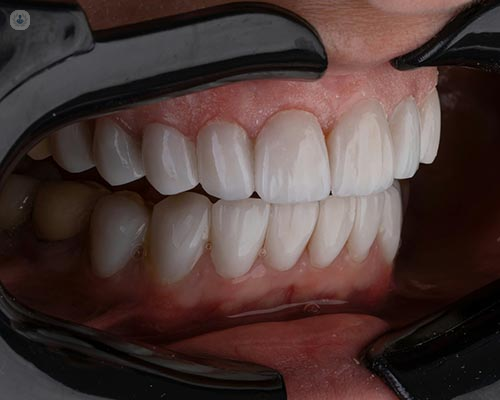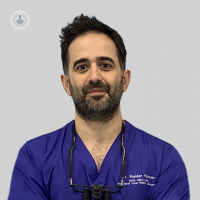Bone grafting in dental surgery: what you need to know
Written in association with:Bone grafting is a procedure often recommended for patients who need additional bone support for dental implants or other oral surgeries. In cases where bone density is insufficient, this procedure plays a crucial role in ensuring a strong and stable foundation for dental implants. Here, leading principal oral implant surgeon Dr Haidar Hassan discusses the purpose of bone grafting, how the procedure works, and what to expect during recovery.

Why Is bone grafting needed?
Bone grafting is generally required when a patient’s jawbone does not have sufficient volume to support a dental implant. This lack of bone can be caused by various factors, such as tooth loss, gum disease, or trauma to the jaw. When a tooth is lost, the surrounding bone begins to deteriorate because it no longer has the necessary stimulation to maintain its strength. Over time, this leads to bone loss, which can prevent successful implantation of dental prosthetics. Bone grafting serves to regenerate or replace missing bone, providing the support needed to hold a dental implant firmly in place.
What types of bone grafts are available?
Several types of bone grafts are available, each with unique benefits. The most common include:
Autografts: These grafts use bone from another area of your own body, often taken from the chin or hip. Autografts are considered the gold standard as they carry the patient’s own cells, which can improve integration and healing.
Allografts: These are grafts which use bone from a human donor. Allografts are processed to ensure they are safe and provide a compatible structure for new bone growth.
Xenografts: These come from animal sources, typically bovine (cow) bone. Xenografts are safe and effective, providing a strong scaffold that helps the body generate new bone.
Synthetic grafts: In some cases, a synthetic material is used to stimulate bone growth. These can include materials like calcium phosphate, which gradually integrates with your bone over time.
How is bone grafting performed?
Bone grafting is typically an outpatient procedure performed under local anaesthesia, meaning you will be awake but won’t feel pain in the treated area. Once anaesthetised, the oral surgeon makes a small incision in the gum to access the jawbone. The bone graft material is then placed where it’s needed, followed by suturing to close the incision. Depending on the extent of grafting required, the procedure can take anywhere from 30 minutes to an hour. In more extensive cases, sedation may be offered to ensure comfort.
After the procedure, the body begins to integrate the graft material, eventually creating new bone over the following months. This process, called osteogenesis, can take between three to nine months, depending on the size of the graft and the patient’s healing rate.
What can you expect during recovery?
Recovery from bone grafting is generally straightforward, but it does require some post-operative care to ensure optimal healing. Swelling and discomfort are common in the first few days following the surgery, and these symptoms are typically managed with over-the-counter pain relievers. Your oral surgeon will also provide antibiotics to prevent infection. You may be advised to avoid certain foods, such as hard or crunchy items, which can disrupt the healing process.
During the initial recovery period, it’s essential to maintain good oral hygiene, though you should be careful around the graft site. Most patients can resume normal activities within a week, but complete bone integration may take several months. Follow-up appointments will be scheduled to monitor the progress and determine when your jawbone is ready for an implant.
Bone grafting in dental surgery has a high success rate and is a reliable way to restore bone loss, setting the stage for successful dental implants and a restored smile. If you have any questions or concerns about the procedure, your oral surgeon can provide additional details to help you feel prepared and informed.ç
If you would you like to book a consultation with Dr Hassan, do not hesitate to do so by visiting his Top Doctors profile today.


